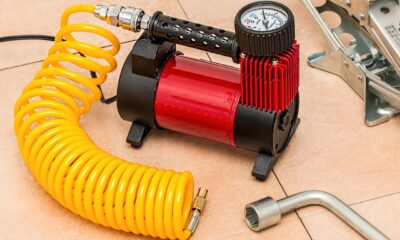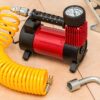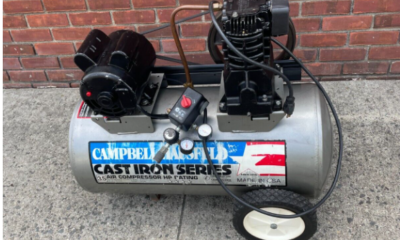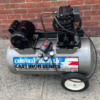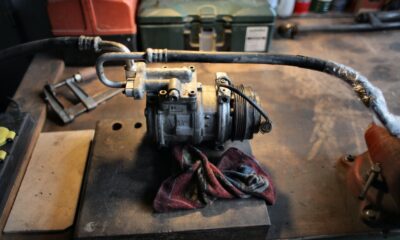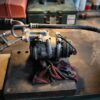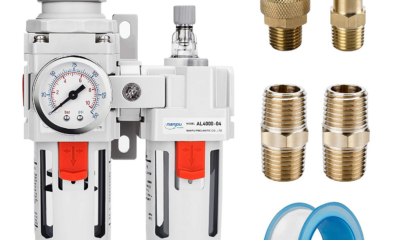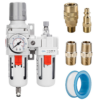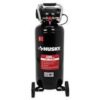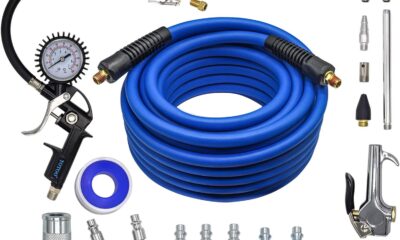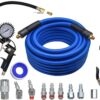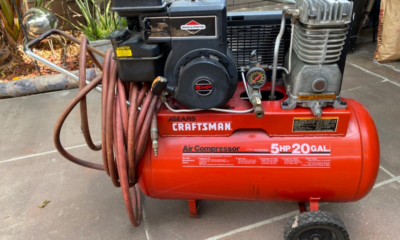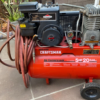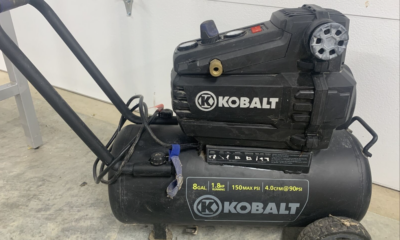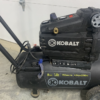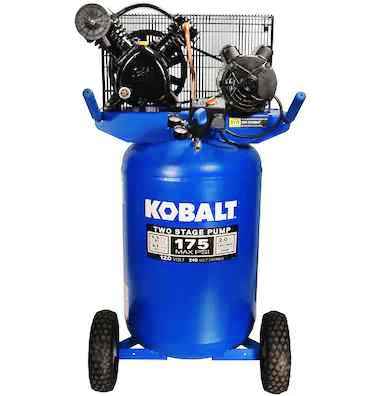who makes husky air compressors
Introduction
Husky air compressors, found in the aisles of your local Home Depot, are popular for their affordability and quality. But who is behind these powerful tools? Let’s delve into the history and manufacturing process of Husky air compressors, understand their benefits and drawbacks, and get a closer look at their innovative “Silent” Air Compressor model.
Who Makes Husky Air Compressors
Today, Husky air compressors are crafted by Campbell Hausfeld, an established company that has been operating since 1836. With its headquarters in Harrison, Ohio, the company enjoys a respected position in the air compressor industry and is recognized for its commitment to quality and affordability.
Husky (tools) Brand history
Going back to its roots, the Husky tools brand was founded by Sigmund Mandl in Milwaukee, Wisconsin, in 1924. His vision was to create affordable, quality tools for the average person. The brand grew rapidly, becoming famous for its top-notch tools. Interestingly, the Husky name changed hands multiple times before being bought by Black and Decker in 1986. The brand started supplying Husky tools to Home Depot in 1992, leading to its current popularity as the House brand of Home Depot.
Where are Husky Air Compressors made?
Initially, Husky tools were manufactured in the United States. However, current production takes place in China and Taiwan. Despite shifting production overseas, the quality of Husky tools has remained consistent, demonstrating their dedication to providing reliable and affordable tools.
Advantages and Disadvantages of Husky Air Compressors
| Advantages | Disadvantages |
| Lifetime Warranty: Husky air compressors come with a lifetime warranty, showing the company’s confidence in their products and their commitment to their customers.Quiet Operations: The unique “Floated Cylinder” design reduces vibration and noise, making Husky air compressors one of the quietest options on the market.Portability: With their versatile and portable design, Husky air compressors are suitable for a wide range of settings and applications. | Pressure Valve Issue: One of the most common issues with Husky air compressors is with the pressure valve, which can cause overheating and decreased efficiency due to leaks |
Husky’s “Silent” Air Compressor
The “Silent” air compressor from Husky is a game-changer for those seeking low-noise operations. With a noise level of only 65 dBA, this product promises quiet, efficient performance without causing any disturbances. Here are some key specifications:
| Running horsepower | Air tank capacity | Air pressure | Noise level |
| 1.3HP | 4.5 gal. | 175 PSI max. | 65 dBA |
It’s a well-built piece of equipment that arrives fully assembled, ready for use. Although it weighs 71.43 pounds, its built-in cart with two large wheels and a telescoping handle makes moving it around easy.
Takeaway
Investing in a Husky air compressor means choosing a product backed by a long history of quality and reliability. Despite a few drawbacks, these compressors remain a popular choice for their affordability, portability, and quiet operation. Whether for DIY projects or professional use, a Husky air compressor can be a valuable addition to your toolkit.
Frequently Asked Questions
1. What is the best brand compressor?
| Product | Tank Capacity | Noise Level | Power Output | Weight | Dimensions |
| Makita MAC2400 Big Bore Air Compressor | 4.2 gallons | 79 decibels | 90 PSI @ 4.2 CFM | 81 pounds | 20 x 18 x 18.8 inches |
| Craftsman CMEC6150K Air Compressor | 6 gallons | 79 decibels | 90 PSI @ 2.6 CFM | 33 pounds | 16.5 x 16.5 x 17.9 inches |
| DEWALT DWFP55126 Pancake Air Compressor | 6 gallons | 76 decibels | 90 PSI @ 2.6 CFM | 30 pounds | 16 x 16 x 17.5 inches |
| PORTER-CABLE Oil-Free Air Compressor | 6 gallons | Not listed | 90 PSI @ 2.6 CFM | 31 pounds | 18 x 18.6 x 15 inches |
| California Air Tools Steel Tank Air Compressor | 8 gallons | 60 decibels | 90 PSI @ 2.2 CFM | 48 pounds | 26 x 14 x 23 inches |
2. What is the most commonly used compressor?
The reciprocating compressor is the most commonly used compressor, known for its reliability and low upfront cost. Despite being slightly noisy and prone to mechanical issues from vibration, with proper placement and regular maintenance, this compressor can easily last for eight to ten years.
3. How do I choose a compressor?
Choosing a compressor depends on your specific requirements and the tools that will be used with it. You should also consider the type of compressor, the horsepower, the Cubic Feet per Minute or CFM, the power source, and the size of the tank. Ensure to select a compressor that matches your needs for optimal efficiency.
Shaleen is a Journalism postgraduate, and like every other gen-z, loves a good dose of humor, Italian food, fashion trends, and TV series. She is an acomplished author and expert in the field of air compressors. Shaleen discovered her passion for technical products and gadgets early in life, which drove her research and write about it.


